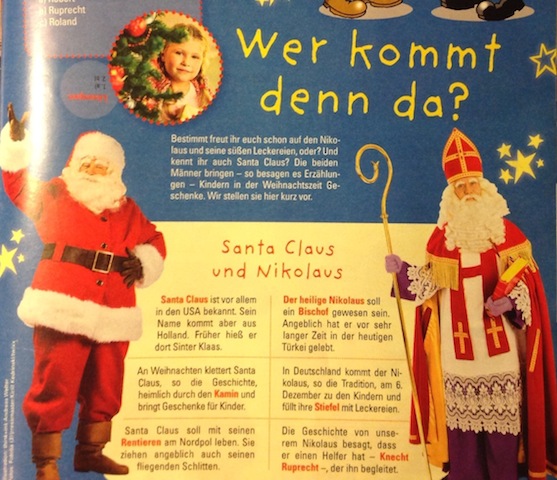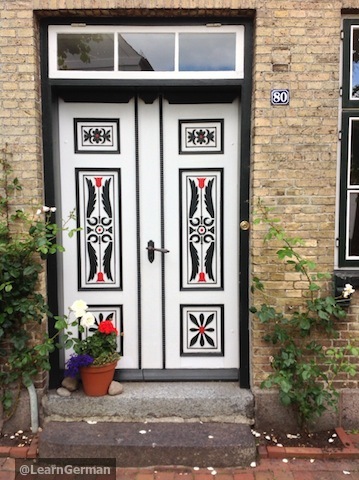Today, 6 December, is Nikolaustag. This is when children leave their boots outside the front door, and Nikolaus fills them with treats. As traditions vary throughout Germany, in northern Bavaria, where I grew up, we put our boots outside on the evening of 6 December.
In other areas (and other family traditions), boots are put outside on the evening of 5 December, with Nikolaus stopping by throughout the night to fill up the boots. Forget the reindeer, his transportation is unknown.

Santa versus Nikolaus
Santa was the invention of a German immigrant to the U.S.A. The cartoonist, Thomas Nast, was commissioned to design a comic figure for an American magazine. From there, Coca Cola picked up the same image and started using it in its commercials. That’s how Santa was born.
Saint Nikolaus himself was a bishop from Myra (Turkey), dating back to the 4th century. He is the patron saint of children, hence the gift-giving to the children, which dates back to the Middle Ages.

 The Nikolaustag is celebrated each year on 6th December. Nikolaus
The Nikolaustag is celebrated each year on 6th December. Nikolaus



